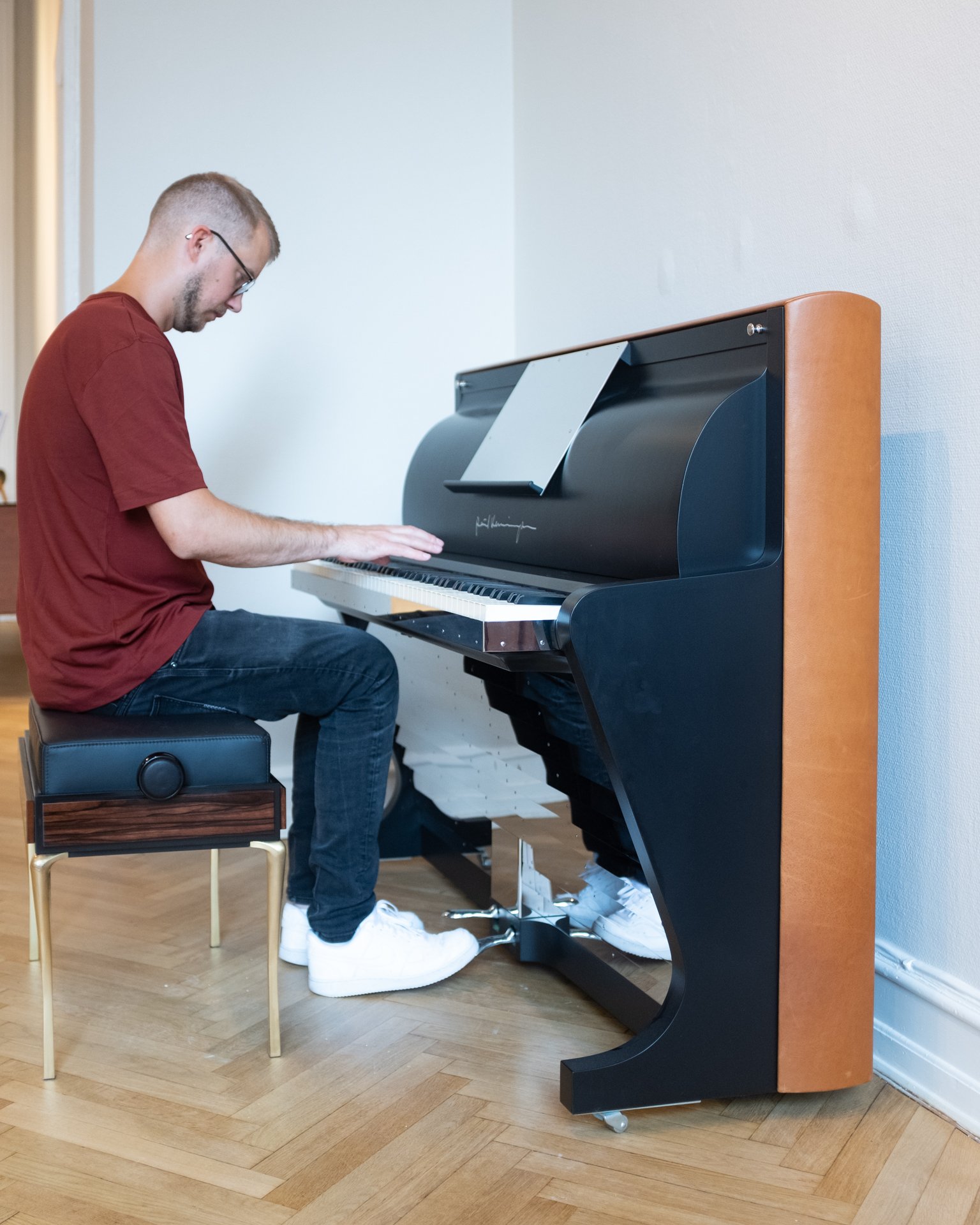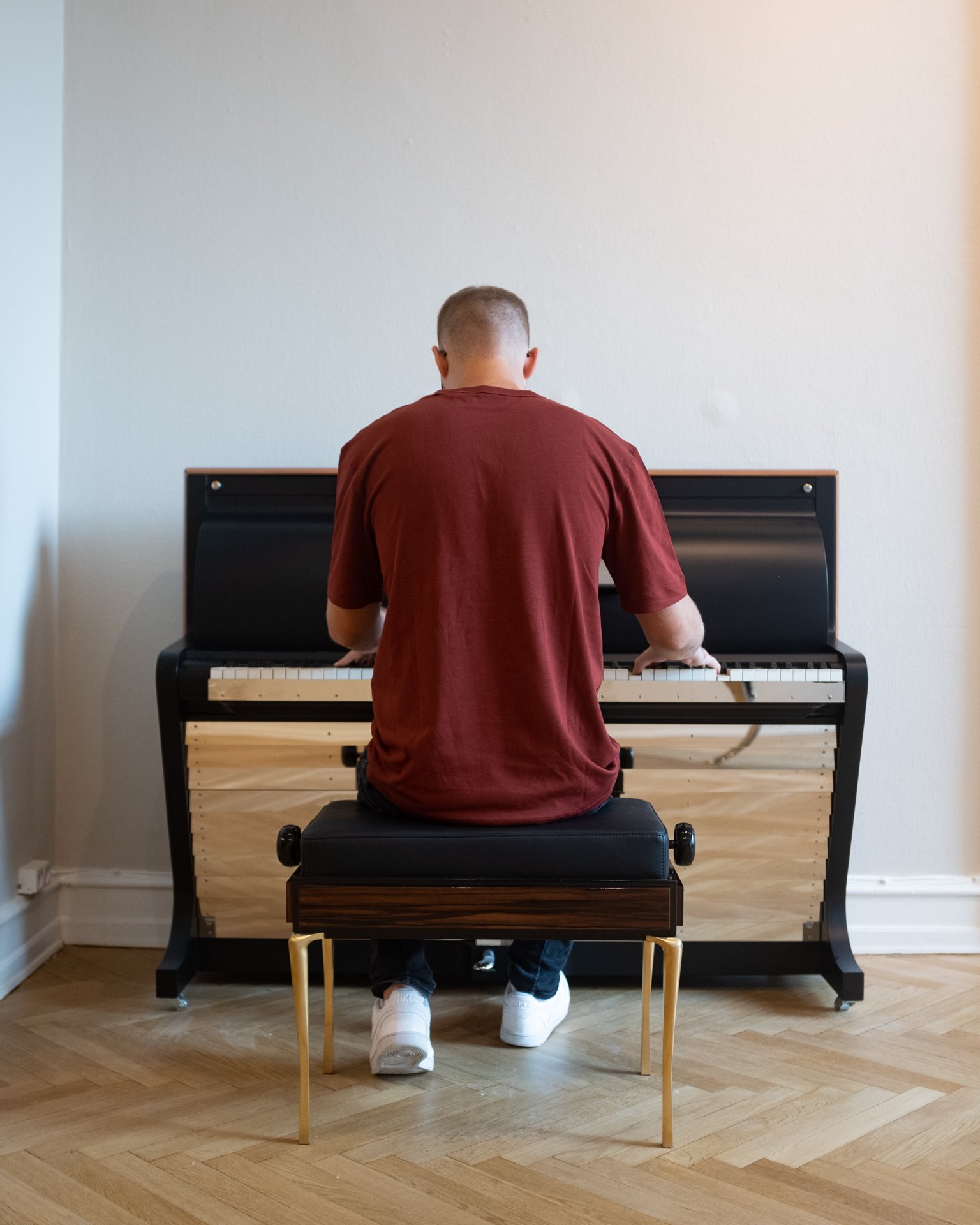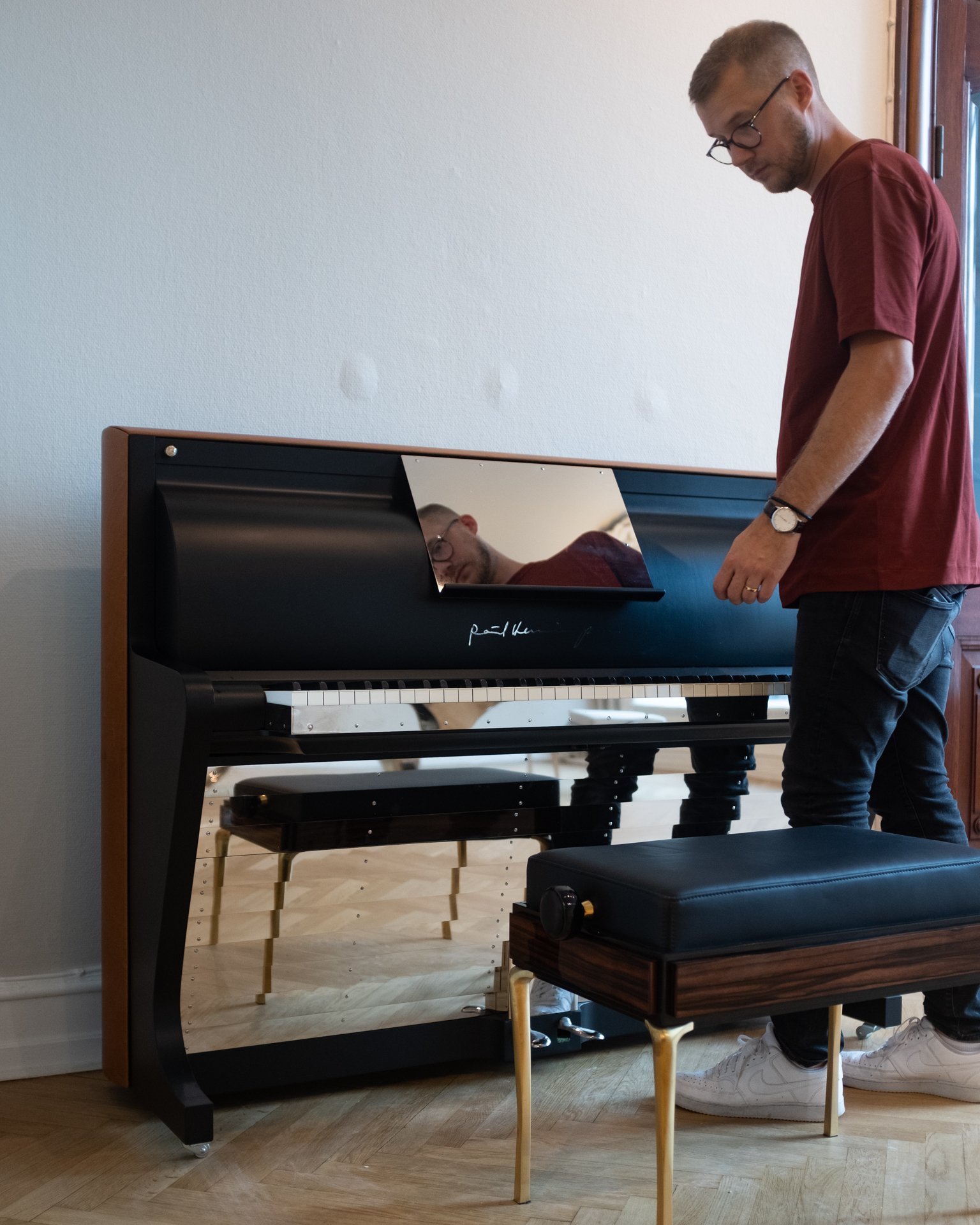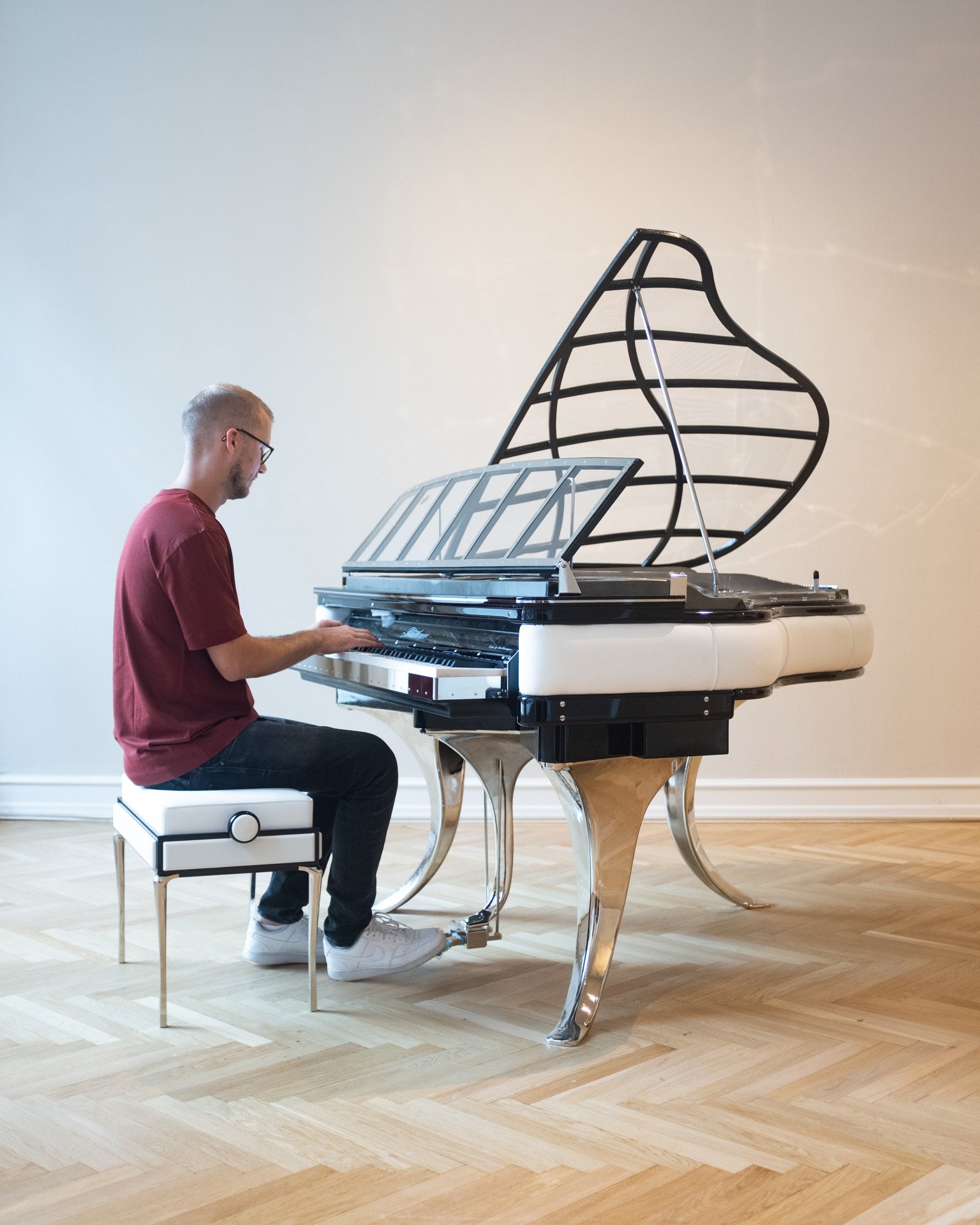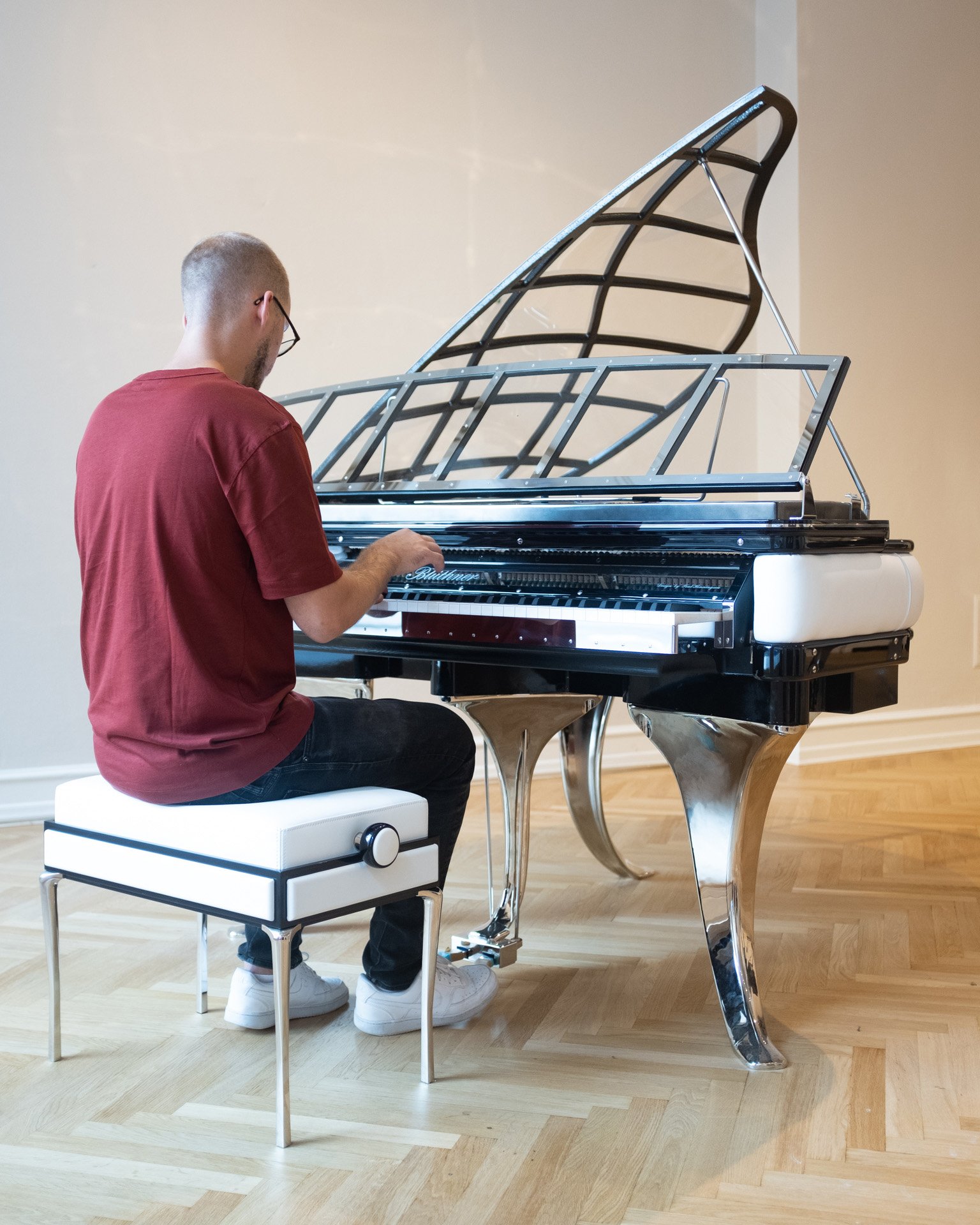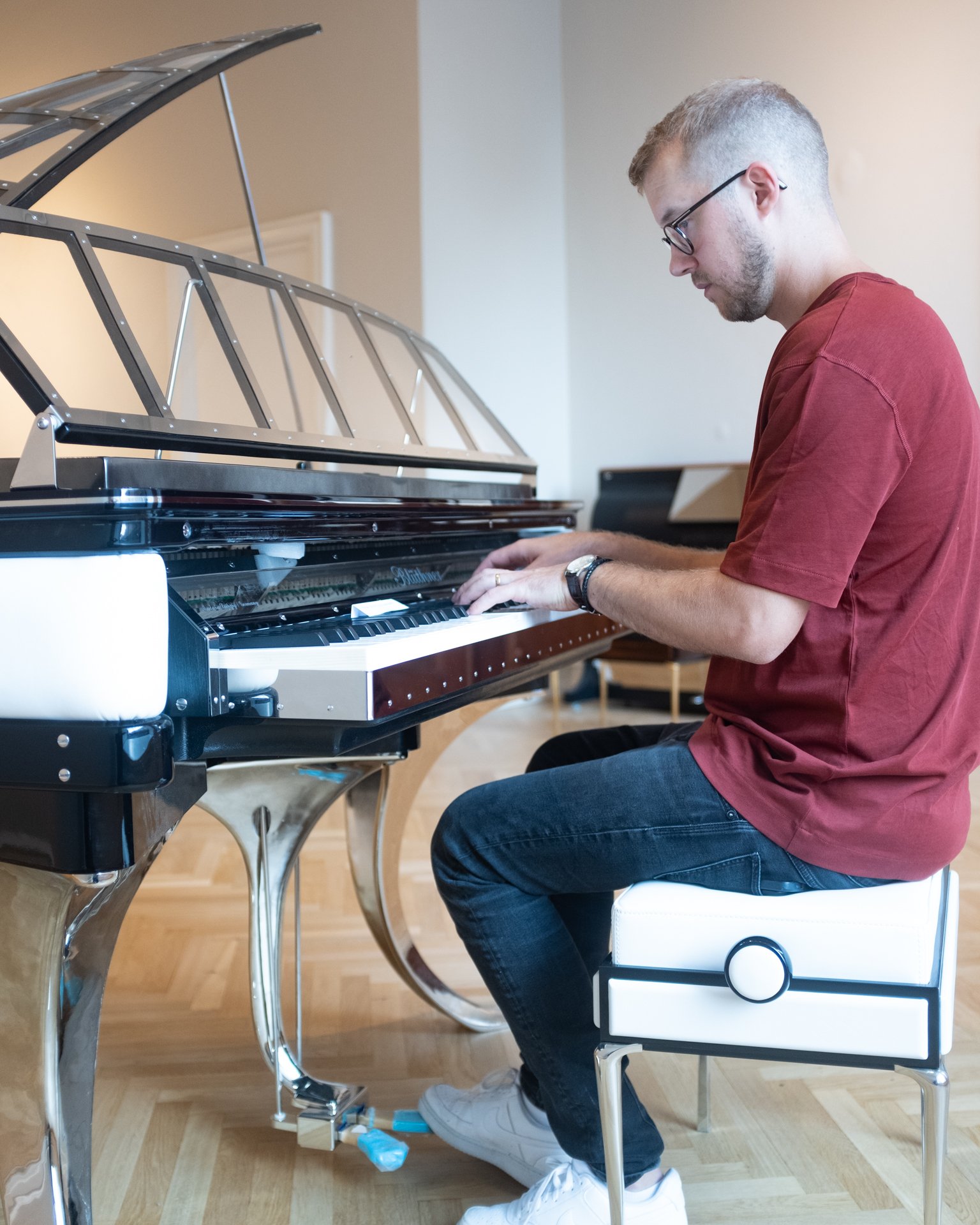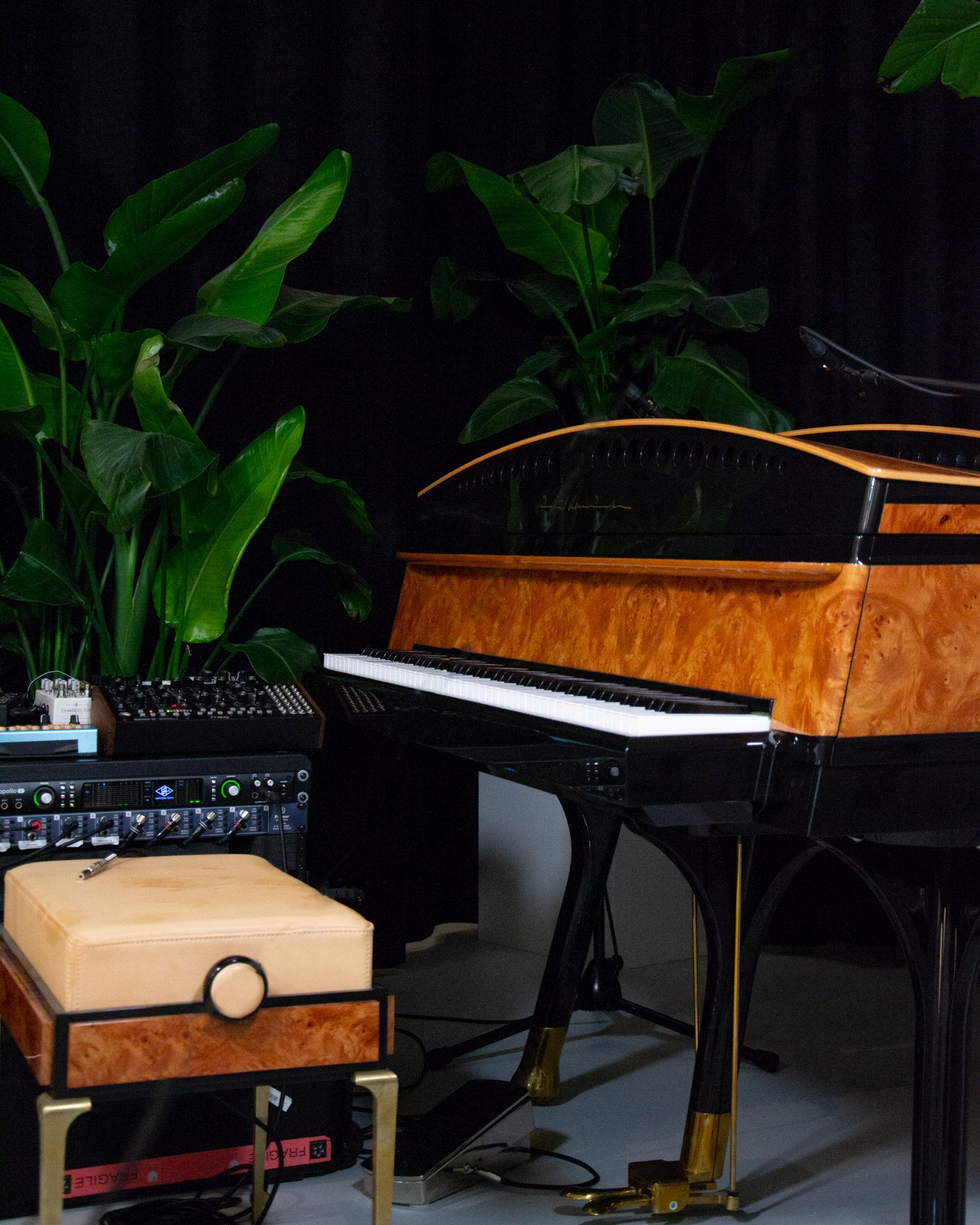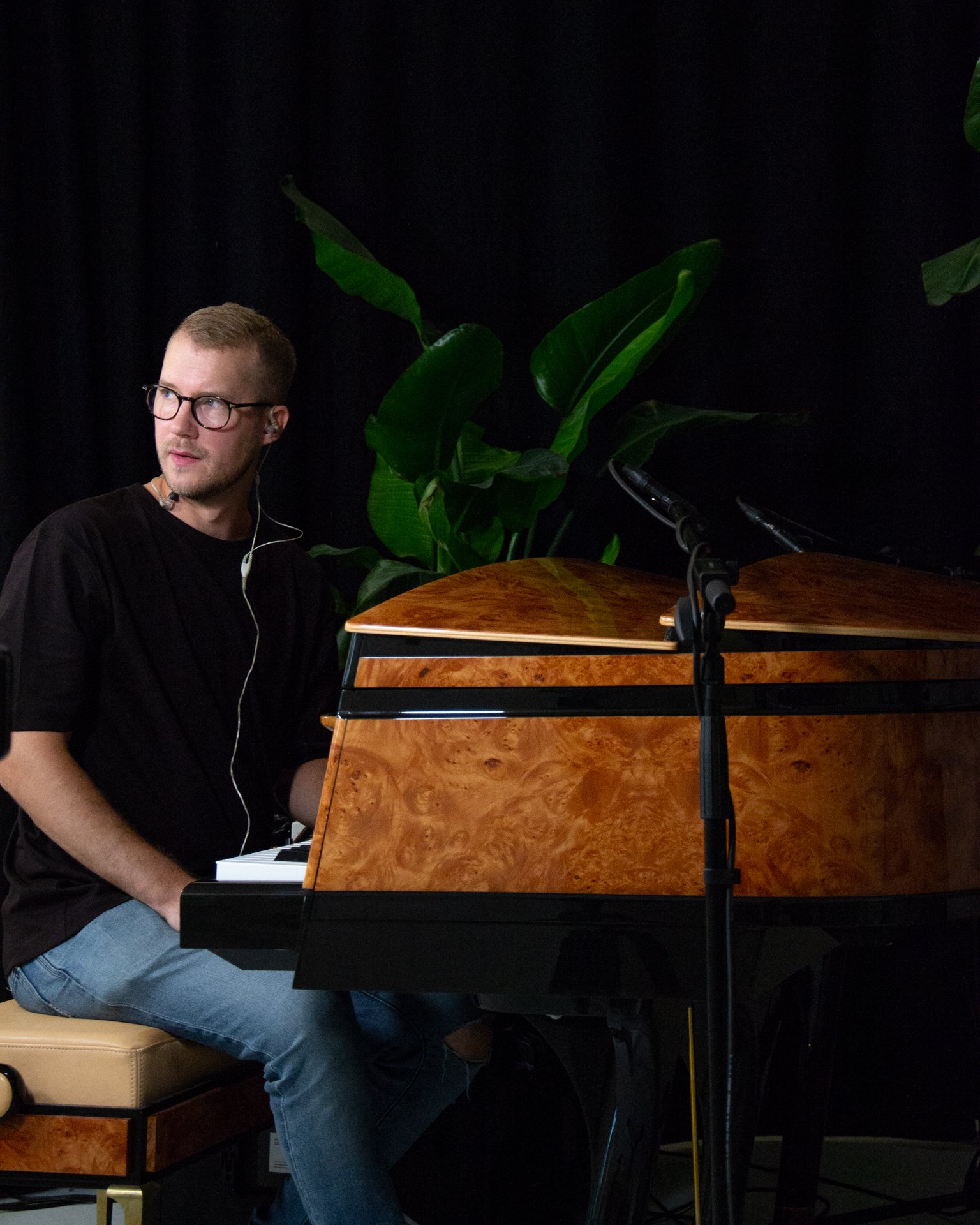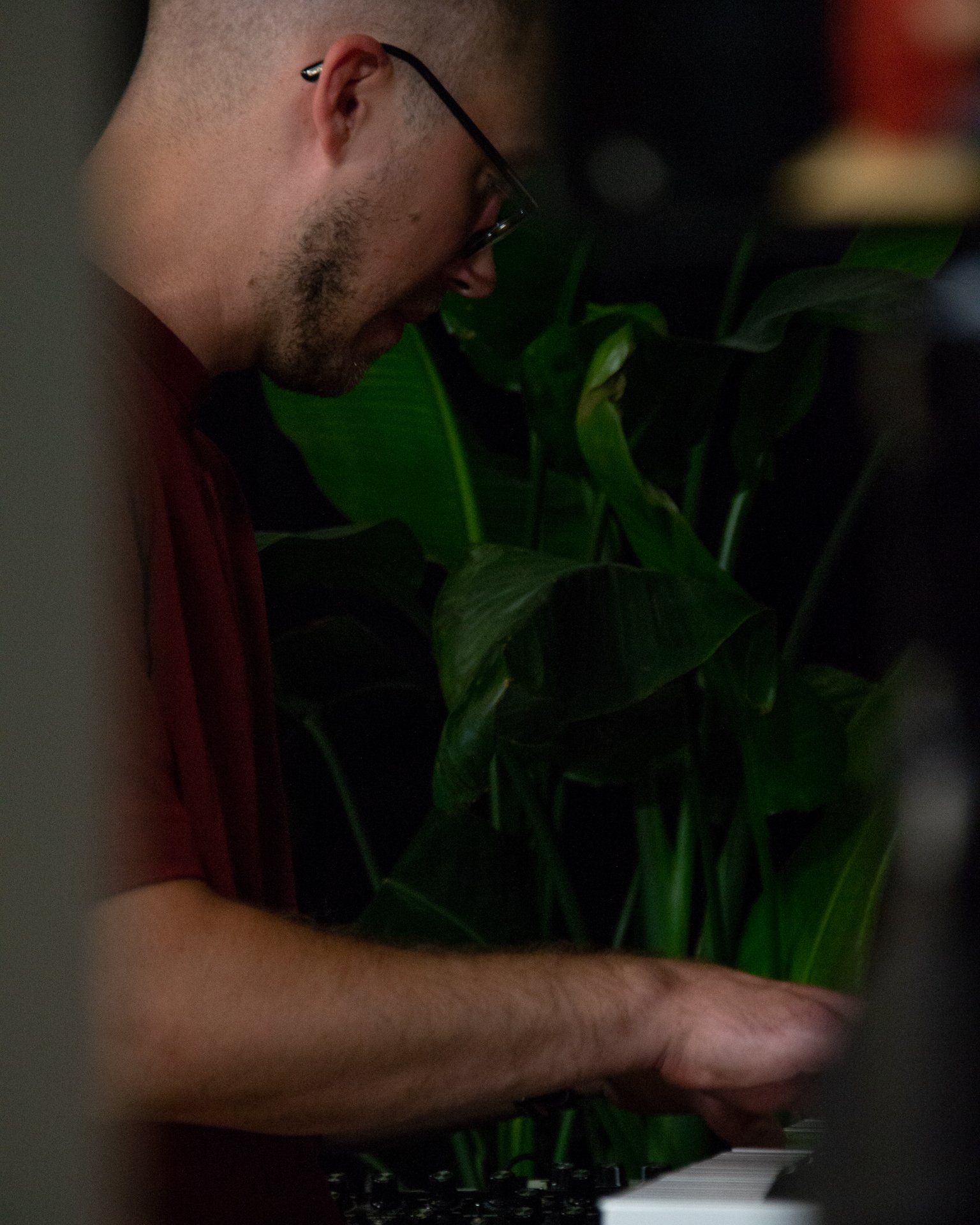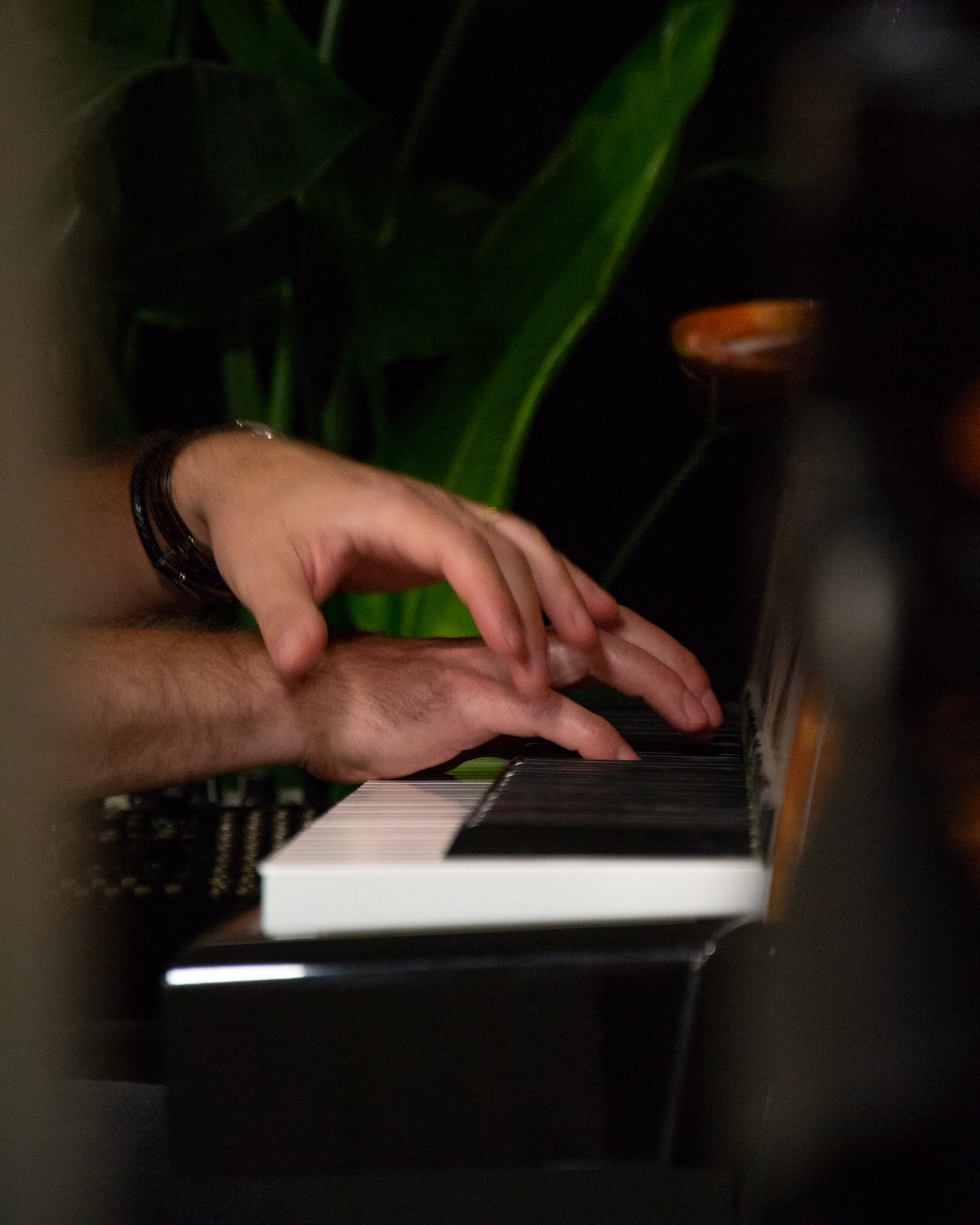Peter Sandberg x PH Pianos
Meeting Peter
“Hello? I think I’m here, if you will come get me from the station.”
We have been waiting to welcome Peter Sandberg for a recording project when he calls. Peter Sandberg is a Swedish neo-classical and electronic multi-instrumentalist/composer, who has established international reputation, creating music for television and commercials, as well as amassing over 450 million streams worldwide. His honesty speaks through his muted piano-based compositions, but also through his uplifting melodies and explorative electronica. Peter has built a diverse, rich and atmospheric catalogue, and as a result, a devoted global fanbase.
“I’ve never been to Copenhagen,” he tells me. We walk from the station to our showroom. It is just 3 minutes to get to our space. We wander from the large plaza Kongens Nytorv, past the famed harbour street, Nyhavn, to our bright showroom on Bredgade. Our showroom is finishing an expansive renovation, and our facilities have grown to make an additional hundred square meters with acoustic curtains and a dedicated space for video- and photo-shooting.
Arriving at the showroom
I show Peter a few of our instruments and then lead him to the PH Bow Grand, which we have set up for the day of recording. Like every pianist I have shown the PH Bow Grand Piano to, he spends a long time exploring, enjoying, and getting to know the instrument. “Any chance you might have an extra one that I can have?” he jokes (maybe he is not joking).
He takes some time to acquaint himself with the piano and then unpack his gear- he has a lot of pedals, buttons, cords, and more. “This is my small setup,” he assures us.
We break for lunch and then a coffee— he has been traveling since early morning—and I ask him about his home studio setup. “I have my own space at home, and I’m really lucky. It’s on my own property, and it has a couple of instruments. I always have the recording running when I’m working in there.”
Let’s play
After lunch he sets up sound and video, and starts to improvise. Along with two brand-new pieces, Peter will also record one of his pieces from his latest album. The process is fascinating. Peter is wearing in-ear monitors, and he can hear in real-time all the audio he is creating. On the outside, one can only hear when a new input gets played—and it is sometimes very sparse.
Together with our sound engineer, Peter makes 2-3 takes of each piece—an amazing feat considering two of the three pieces he records today are improvisations. The whole process takes just a few hours.
We all have dinner together and then head back to sit for an interview. I’ve been waiting all day to ask him the questions I’ve prepared, and we settle in. Once the levels are set, we start talking about Peter’s background, his compositional process, and his inspiration.
“Neoclassic composers wanted to return to the aesthetics of the classical era, but in the context of today,” says Peter. “What I find is the best thing about neoclassical music is that you are allowed to do whatever you want.” This contrasts to the many norms and rules of classical music that he grew up with.
“I started out wanting to be a classical concert pianist, traveling the world and playing with different orchestras and so on. I was fully engaged in that for many years, but after a while I just fell out of love with it.” That could have been the end of his musical pursuits. But, rather than abandoning the traditional classical music legacy he had been brought up with, Peter channeled his background into original works.
“I gained so much knowledge in my early studies that I can utilize now when composing in a neo-classical way. I have a very fond memory of my teacher who gave me a piece to study by Khachaturian, and it had all these sheets you needed to stick together. It was a whole new world for me… I could put all my emotions into the piece and it was so fun! When I rehearsed that piece, I snapped my first bass string on the piano- for me, that was like rock and roll.”
Peter carefully forms every answer before he speaks, just like he has been in chatting throughout the day. I notice this and ask him about it, and he shares that even when speaking in his native Swedish, he takes his time to answer every question.
Curiosity killed the cat
We talk more about his compositional process, about the importance of nature and of his family (he composes at home; sometimes his inspiration is for helping his youngest get to sleep), and then the conversation shifts to our pianos, designed Poul Henningsen.
“They’re very beautiful pianos…. The first thing that pops into mind when you see one is that it’s such an eyecatching piece, and like a work of art. When you go into a room and see athere’s a ‘standard’ grand piano, you might notice it. But when you you come in and see a PH Piano, you are immediately curious: Is that a piano?” He grins. "And so many questions pop into mind... you sort of get sucked in and want to try it out.”
I ask him what he was curious about when he walked in. “The sound, obviously! But the Bow Grand that I played on, I really liked because of the holes in the lid. You don’t need to have the lid open to get sound towards yourself. I’m very drawn to mellow-sounding piano sounds, and this piano was perfect for my sound. Also, the fact that it is still a piece of art, and so beautiful to look at…. It was really inspirational.”
Freedom of the Artistic Mind
For him, what is exciting is the idea that the instrument has everything you would expect, and yet also goes beyond. Much like in Peter’s music, the thrill of breaking free from expectations is liberating and captivating. We talk about this in context of the piano industry and the intriguing growth of the instrumental music market.
“I don’t like how it has been before: where there has been a standard of how a grand piano should be (and there has been this one brand that has been a guiding pole). I feel that is so limiting because there are so many sounds and creative ideas to be explored. So, I love the new trends coming out. It’s really exciting for me as a composer and pianist: I get to see all these amazing new tools. It is also exciting how the music industry is changing and you see what kind of piano players are emerging. Many are so different from the more traditional way of a concert pianist, for instance. It’s amazing to see these neoclassical composers emerging from everywhere and how they are able to sell out huge concert halls, playing instrumental music.”
I comment that he is part of the change we are talking about. “I’m very excited for the future of instrumental music. One thing I love with neoclassical music is that I reach so many people I wouldn’t have reached if I were a traditional pianist.” Amazing indeed, and an important message. While honoring the traditions of the past, we can dare to allow freedom of the artistic mind- and be part of the expanding new wave of piano music and instruments.

